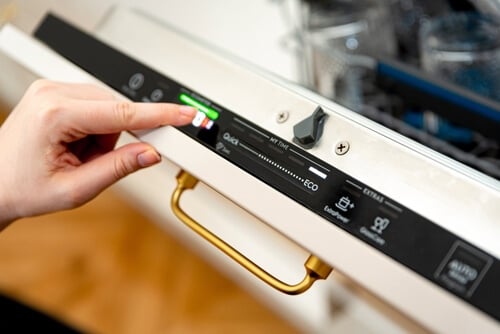More energy deals are slowly becoming available, but at the moment there aren't enough for you to compare through Confused.com. We've still got plenty of tips to help you switch if you see a new energy deal, or if your current supplier offers you a cheaper deal. We can also help you prepare for when the energy market does reopen.

Why can't I switch energy providers now?
There aren't many options for switching energy at the moment because of the rising costs of wholesale energy. This started post-pandemic as there was more demand for energy, and the war in the Ukraine also caused energy prices to rise. As a result, lots of suppliers went bust.
But energy prices are slowly beginning to fall again, and you might be able to switch suppliers soon. Some suppliers are offering limited amounts of fixed energy deals. These work well if you want to know what’s coming out of your bank account every month. You also have some protection if prices start to rise again.
We can help you access our best energy deals, all you need to do is get switch ready.
Get switch ready
Sign up to our switch ready programme so we can tell you when more energy deals are available. It takes less than 1 minute:
- Log in to your Confused.com account and confirm your address, energy usage and energy supplier's details.
- We'll send personalised energy deals straight to your inbox.
- Choose a deal you're happy with and we'll complete the switch for you.
Get personalised electricity deals straight to your inbox
Get personalised electricity deals straight to your inbox
How do I switch energy suppliers?
Our energy comparison service isn’t available at the moment because there are only a small number of active energy suppliers.
But some suppliers are offering a small amount of fixed deals. Follow these steps if you see a cheaper fixed deal advertised or if your current supplier offers a cheaper deal.
These steps also apply if you rent and pay a supplier for your energy directly:
What you need before you switch suppliers
You’ll need this information before you start the switch:
- Your postcode
- The name of your current supplier
- The name of your current energy tariff
- Your annual energy usage or costs - you should be able to find this on your bill
Step 1: Check your meters
You need to make a note of both your gas and electricity meter readings. You also need to know what type of meter you have. Usually it’s either:
- A standard credit meter. You should have a direct debit or regular billing set up for one of these.
- An economy 7 meter. You’ll pay 2 different rates for your electricity if you have this type of meter – 1 for the night and 1 for the day.
- A prepayment meter. You pay for your energy before you use it with this type of meter. Usually you top it up regularly at a local shop.
Step 2: Look out for new fixed deals
If you see a new fixed deal with a new supplier, find a recent energy bill. You can use this to tell your new supplier your energy usage and details about your property.
It’s more straightforward if you’re switching to a deal with your current supplier as they’ll already have these details. But you might still need to supply a meter reading.
Step 3: Set up your direct debit
If you’re happy with a deal and you want to buy it, you need to set up a direct debit.
Your new provider should contact your existing provider on your behalf to start your switch when they have your direct debit information and meter readings. There’s usually a discount if you pay by direct debit too.
The majority of energy suppliers are signed up to the Energy Switch Guarantee, which means your switch should take no longer than 21 days.
Step 4: If you change your mind about your new deal
You have a statutory 14-day cooling-off period during which time you can change your mind. This is the law, and it starts the day after you’ve agreed the terms of a switch to a new supplier.
If you want to cancel the switch, you should tell the new supplier straight away.
If I switch, will there be any interruption to my gas or electricity supply?
No. Your new supplier uses the same wires, pipes and meters that you currently use. They also contact your existing supplier to arrange for the transfer of your supply. The only thing that you should notice is that your bill is coming from your new provider
How do I switch energy suppliers if I'm moving home?
First, you need to take meter readings just before you move out. Give these to your current supplier to make sure you only pay for the energy you use.
Once you’re at your new home, you should take meter readings on the day you move in. Whoever's supplying the property needs them to calculate your bills accurately.
If you’ve found a better tariff, you should tell your supplier you’ll be leaving them a couple of days before you move. Whoever's supplying the new property needs to know your move-in date.
You don’t have to change supplier because you’re moving house. If you find your current deal is the best value, then you can stay with the same supplier on your current tariff. You just need to give your existing supplier a minimum of 48 hours' notice of your move. You also need to tell them:
- Your new address
- The date you’re going to be moving in
What to do when your energy supplier goes bust
You don’t need to do anything when your energy supplier goes bust other than take some meter readings.
The UK regulator, Ofgem, has to make sure there’s no interruption to your gas or electricity supply. They’ll appoint a new supplier, who should eventually get in touch with you.
Don’t switch energy providers until you’ve been fully transferred to your new supplier.
You should always ask the new provider to put you on their lowest tariff, but you can still compare their best price to the deals that are on offer from other suppliers.







